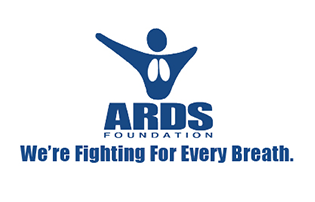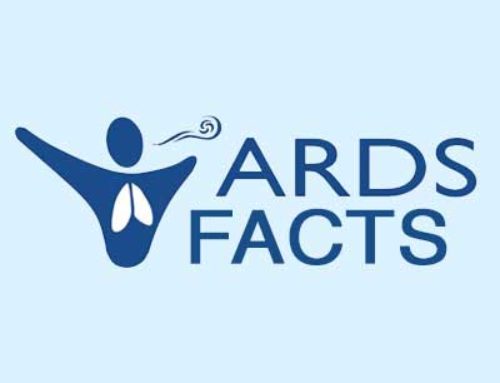Information about Acute Respiratory Distress Syndrome
Acute Respiratory Distress Syndrome (ARDS) is an acute process, which results in moderate to severe loss of lung function.
In ARDS there is intense inflammation of the lung tissue, which can be caused by a variety of factors. This inflammation in the lung results in a loss of function. The alveoli lose their ability to exchange oxygen and carbon dioxide with the blood. This loss of function of the alveoli is due to collapse of the air sacs and leakage of fluid (which is called edema) into the air sacs.
This sequence of events can happen rapidly. It can start in one lung and advance to the other. If the inflammation persists over time, the lungs will eventually attempt to heal the damage, which results in the formation of scar tissue. The formation of scar tissue will continue to create a problem with gas (oxygen and carbon dioxide) exchange.
A. ARDS presents within 12-24 hours of antecedent event
B. ARDS patients intubated within 72 hours in 90% cases
C. High mortality rate (ICU: 37%, overall: 42%)
D. Predictors of better prognosis
1. Those who survive acute respiratory distress syndrome in the first 2 weeks have better prognosis
2. Age under 55 years
3. Trauma related to acute respiratory distress syndrome
E. Predictors of poor prognosis
1. Elderly (especially over age 70 years)
2. Immunocompromised patients
3. Chronic Liver Disease
4. Increased dead space fraction
F. Only 34% of ARDS survivors are well enough to be discharged directly home
G. ALI/ARDS leads to approximately 2.2 million days in the ICU
Possible Precipitating Causes
- Shock
- Severe blood loss
- Bone fractures – if they cause shock.
- Severe infections
- Bacterial lung infection
- Viral lung infection
- Fungal lung infection
- Lung trauma
- Drowning
- Water inhalation
- Vomit inhalation
- Pneumonia
- Sepsis
- Poliomyelitis
- Blood transfusion adverse reaction (type of Adverse reaction)
- Heart bypass surgery adverse reaction (type of Adverse reaction)
- Smoke inhalation
- Toxic fume inhalation
- Circulatory collapse
- Sepsis
- Asthma
- Emphysema
- Muscular dystrophy
- Pancreatitis
- Guillaine-Barre syndrome
- Uremia
- Myasthenia gravis
According to the NHLBI:
- Incidence (annual) of Acute respiratory distress syndrome:
150,000 Americans will be diagnosed with acute respiratory distress syndrome each year
- Incidence extrapolations for the United States of America for Acute respiratory distress syndrome:
150,000 per year
12,500 per month
2,884 per week
410 per day
17 per hour
Acute respiratory distress syndrome by country (Extrapolated Statistics)
Country/Region Extrapolated Incidence Population Estimated Used
USA 161,942 293,655,405
Canada 17,927 32,507,874
United Kingdom 33,237 60,270,708
France 33,322 60,424,213
Greece 5,871 10,647,529
Germany 45,454 82,424,609
Ireland 2,189 3,969,558
Italy 32,016 58,057,477
Netherlands 8,999 16,318,199
Poland 21,301 38,626,349
Spain 22,213 40,280,780
China 716,276 1,298,847,624
India 587,355 1,065,070,607
Japan 70,220 127,270,708
Philippines 47,559 86,241,697
Bangladesh 77,945 141,340,476
Thailand 35,771 64,865,523
Russia 79,397 143,974,059
Australia 10,981 19,913,144
New Zealand 2,202 3,993,817
Afghanistan 15,725 28,513,677
Egypt 41,976 76,117,421
Israel 3,418 6,199,008
Saudi Arabia 14,225 25,795,938
Turkey 37,992 68,893,918
Mexico 57,882 104,959,594
Brazil 101,526 184,101,109
Puerto Rico 3,418 6,199,008
South Africa 24,512 44,448,470
Population estimates based upon US Census Bureau, Population Estimates, 2004 and US Census Bureau, International Data Base, 2004







